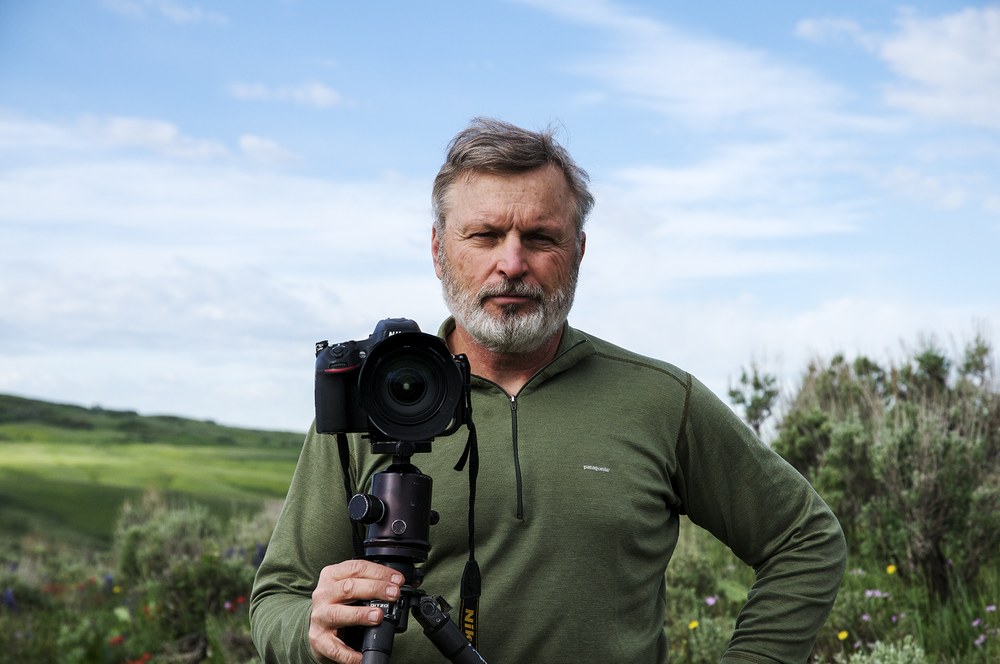
Few have documented the new American West as thoroughly or as beautifully as conservation photographer Dave Showalter. In a new book of photography and essays, Sage Spirit (out in August from nonprofit conservation publisher Braided River), Showalter illuminates the Sagebrush Sea which houses an abundance of unique wildlife, including the quickly receding population of Greater and Gunnison Sage-grouse.
Dave will present his stunning photography collection Wed, Aug 12 at The Mountaineers Program Center in Seattle as part of the BeWild presentation series. He took some time to answer a young environmentalist’s many questions about the far-reaching impacts of the fracking and oil industry and the diverse coalition of westerners involved in sagebrush and grouse protection. As an extra bonus, he even offered up a few photography tips for you bird-loving buffs who want to catch your local aviators in action!
Conservationist Rick Bass has referred to the grouse in the sage as the “canary in the coal mine” for the ecological health of the west. Do you agree?
DS: Absolutely. Think about it like this - Greater and Gunnison Sage-grouse evolved with the sagebrush ecosystem and have been here for about 25 million years. Greater Sage-grouse once numbered around 16 million individuals and have been declining since the west was settled, which was only 150 years ago. They’re presently declining at about 2% per year and number around 250,000 over an 11-state region.
As a photographer, how did you get engaged in the conservation of the sage grouse?
DS: I couldn’t believe that we were losing the wild character of the west when the fracking energy rush kicked into high gear a decade or so ago. Mega gas fields were taking over thousands of acres and rendering them useless for anything but extraction. I work with conservation groups and was getting information about the transformation of the west, and simply felt compelled to do something.
What’s your biggest piece of advice for photographers trying to capture dynamic shots of birds in their natural habitat?
DS: First, and this goes for any wildlife photography, know as much as you can about your subject before heading out. There are so many ways to learn about birds in guidebooks and online, and that knowledge gives you a big advantage in the field. Once you understand the habitat, seasonal movements, and have a plan, you can start thinking about composition, light, and technical choices. When I’m photographing sagebrush songbirds for example, I’m thinking first about where they’ll be concentrated in the second half of May, when males are singing from sagebrush tops while protecting territory. Then I select a location for the habitat and background to make a pleasing image, generally choose my long lens, and wait for a moment when the bird is doing something interesting - typically singing.
What are your hopes for how getting these photographs of the sagebrush sea and the grouse into the world will impact the national conversation around energy extraction in the sage grouse habitat?
DS: I want people to see the amazing beauty and wild that remains, to visit the sagebrush landscapes, and to feel compelled to write a letter and call their Congressman - get engaged with conservation leaders and tell their friends how much it matters. These are our lands after all. More than anything, I’d like to see ordinary folks put pressure on elected officials and make sure they know this is a landscape, so interconnected that we simply can’t continue eroding the edges. Culturally, we’ve shown a willingness to protect our most treasured landscapes, but the national parks aren’t sustainable without surrounding sagebrush lands.
BONUS QUESTION! A little birdie told me that you love jam bands. Who are your favorites?
DS: I’ve always loved improvisational rock music and really got into the Grateful Dead early on. Besides the Grateful Dead, Railroad Earth, Chris Robinson Brotherhood, Greensky Bluegrass, Allman Brothers, and My Morning Jacket have been getting some play lately. Music is so joyful and uplifting and mine gets more twangy in the sage - so I might tune into Johnny Cash, Old and In The Way, Yonder Mountain String Band, or Bob Dylan.
Get your tickets
Dave Showalter: Capturing the Spirit of the Sagebrush Sea
part of the BeWild Speaker Series
 Erika Lundahl
Erika Lundahl